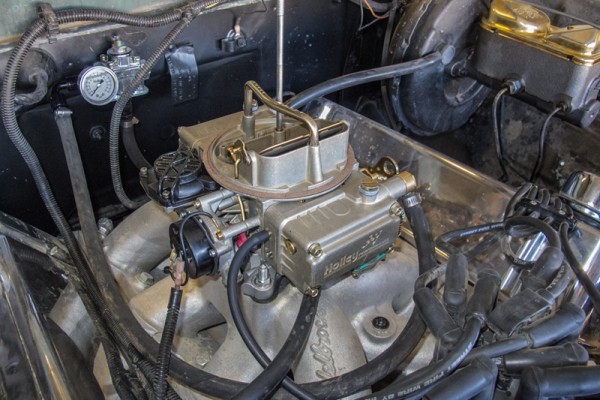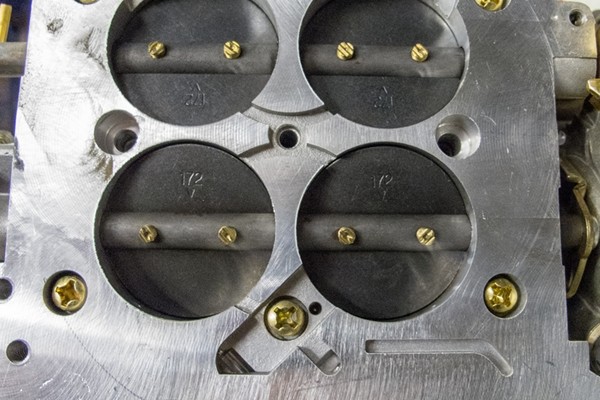Let me start by confessing that I am not a carburetor tuning expert. There are those skilled old timers that can tune a carb by ear and carry spare jets in their pocket. For the rest of us though, there is no need to be intimidated by a carburetor. We recently added a 770 cfm aluminum Holley Truck Avenger on top of the 460 engine and wanted to share how we chose the carb and the fine tuning we performed to make it work great on the trail. Note that we were not as concerned with maximum power potential as we were with crisp throttle response, linear power, and the ability to idle at any angle.
We’ll start with some carburetor basics and how they apply to the 4×4 world. We will focus on four barrel carburetors that are commonly run on V8 engines—if you have a four cylinder or six cylinder you are likely better off with a smaller two barrel carb, but many of the same principles still apply.









In my experiences, a stumble off idle (especially on a new Holley) is caused by the throttle plates being too far open at idle. This causes the transition circuit to be in use at idle. So, as the throttle plates open, the transition circuit doesn’t function, causing a momentary lean mixture and stumble.
This particular carb has gotten a lot of negative feedback amongst off-road enthusiasts and I hope I can dispel a few myths lingering around this carb and explain a few things that are unique about it.
For starters, any carburetor can be suitable for off-roading. This particular carb has easily adjusted floats (all 4150 and 4160 carbs do for that matter) which is essential for controlling flood outs during high angle maneuvering.
This carb has vacuum secondaries which is an essential feature in my opinion for any carb expected to operate well on the street and/or at low rpm.
This carb has a fancy vent crossover tube further enhancing its ability to prevent high angle flooding.
This carb is a 4160 series carb so it doesn’t quite have as many tunable features of a 4150 series carb, however the extra tune-ability is likely unnecessary for an off-road application.
This carb has annular boosters in all 4 barrels! This is the big difference. Annular boosters are typically only used in incredibly large racing carburetors for various reasons however when used appropriately they function exceptionally well in low rpm applications. The only significant shortcoming of the overall superior annular booster is it doesn’t work well on hot manifolds. Annular boosters atomize fuel much better than the traditional down-leg and strait-leg boosters.
When an annular booster dumps finely atomized fuel into a hot manifold it boils and vaporizes completely, causing a lean condition and often a lean miss. Sound familiar? Off road vehicles almost always use a “hot manifold.” Hot manifolds can usually be summarized as any low rise manifold. Yes, that includes aftermarket aluminum low rise manifolds. The floor on these manifolds are directly exposed to excessive engine heat and that creeps into the floor of the plenum boiling up all of the annular booster’s finely atomized fuel.
Drop and strait leg boosters don’t atomize the fuel as finely and will in turn cool the hot manifold and vaporization of fuel is minimized.
Summation: annular booster carbs do make for all around better performance in any application when installed on a cold intake manifold (think air gap). Drop and strait leg booster carbs don’t atomize fuel as effectively however when combined with a hot manifold (think performer) they produce great results just the same.
I have installed Holley truck avenger last year. Install was a snap adjusted the floats no problem. So much better then what I was running. However it has seemed to go to the rich side on mixture and after reading about the hot manifold issue I believe this is my issue. I think the fuel is hot before it gets to the carb as my fuel line is on the inside of my frame rail and runs next to my exhaust and headers. What is my best chance to resolve this issues. I’m running a manual fuel pump with stock 302 that is older and say for several years before I bought the truck. Any suggestions are appreciated.